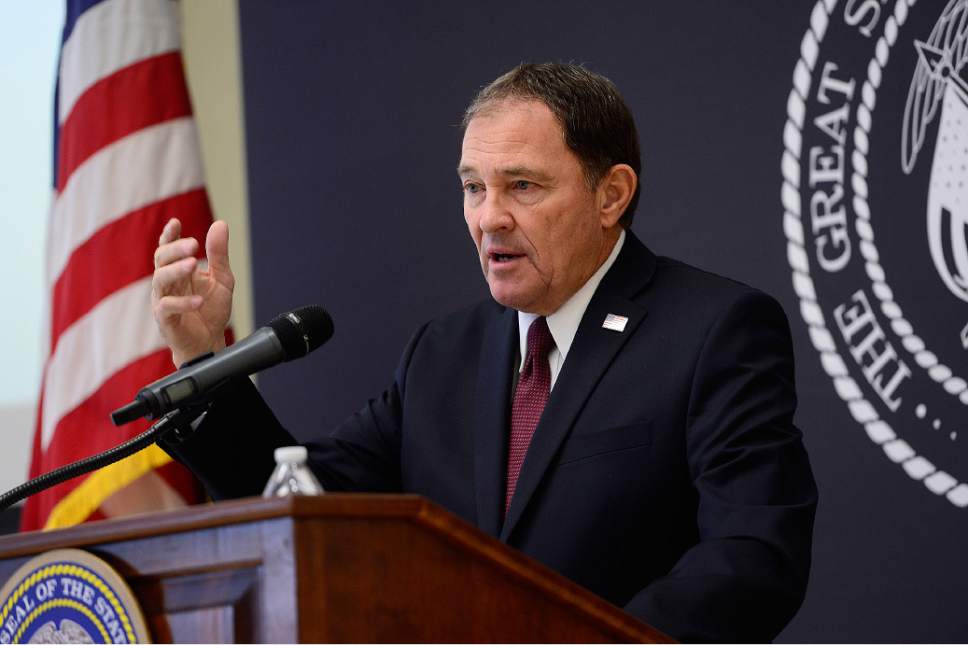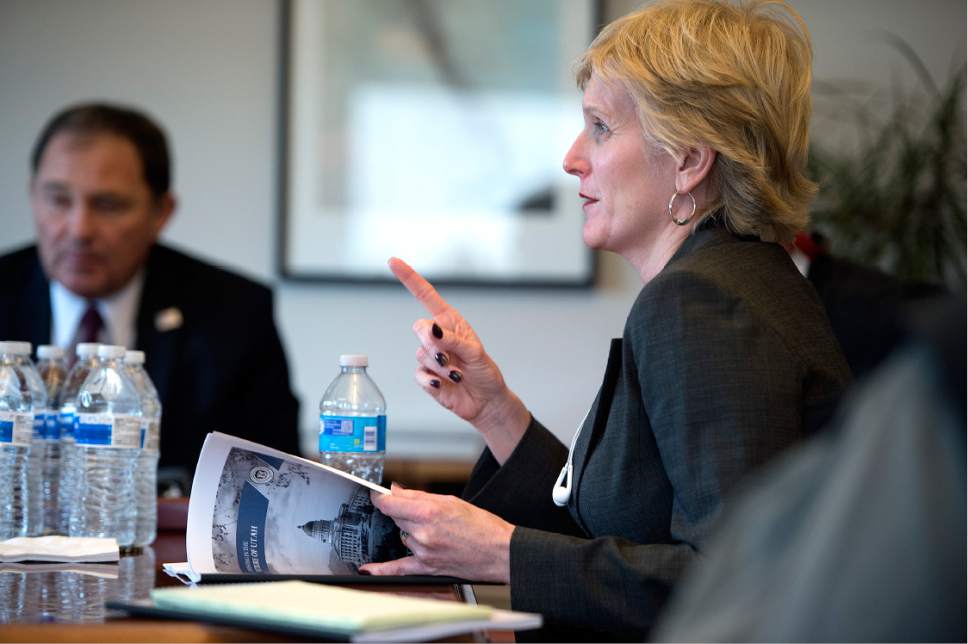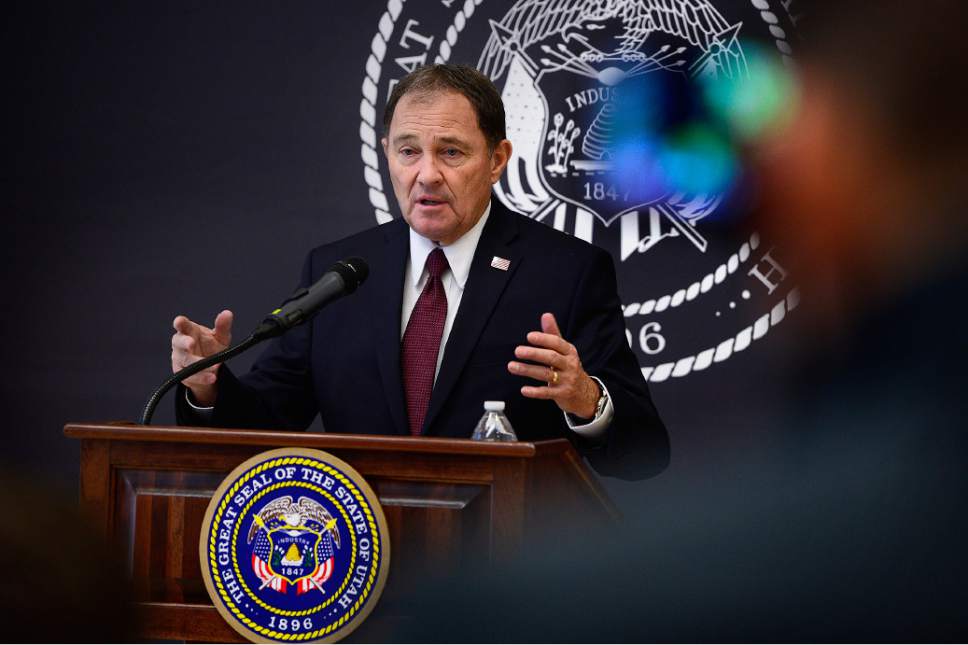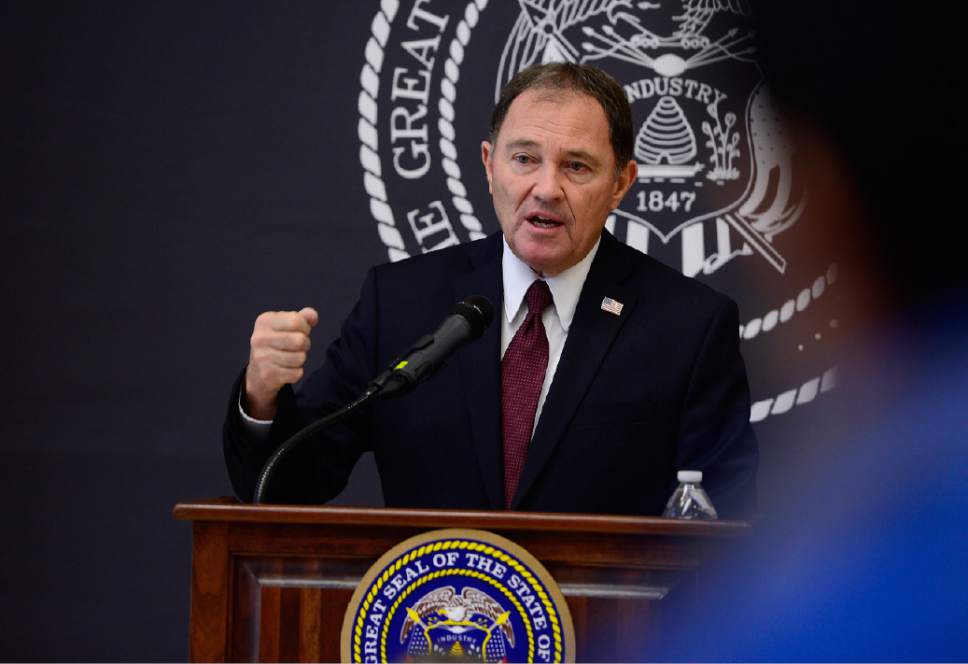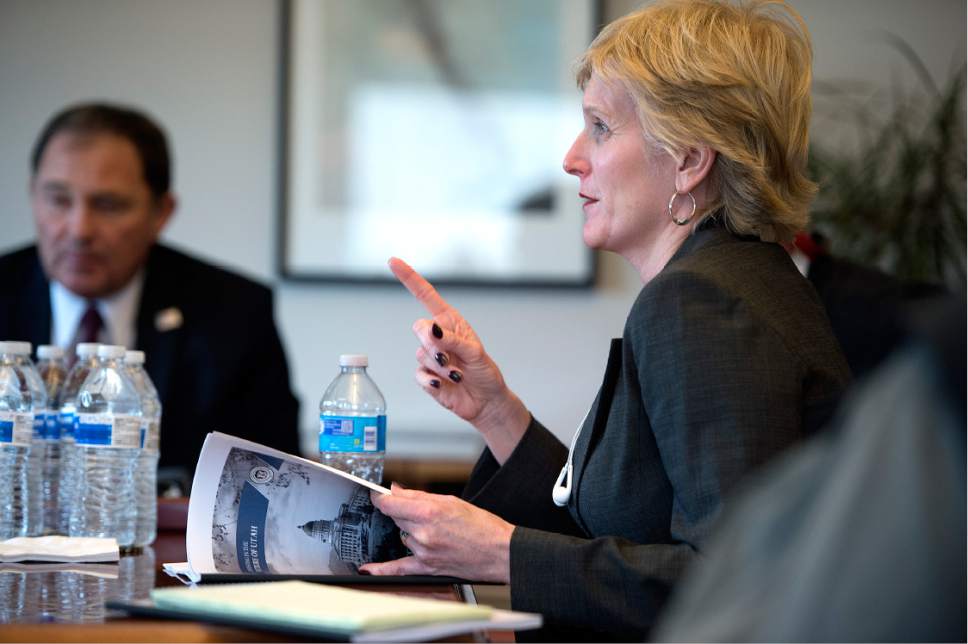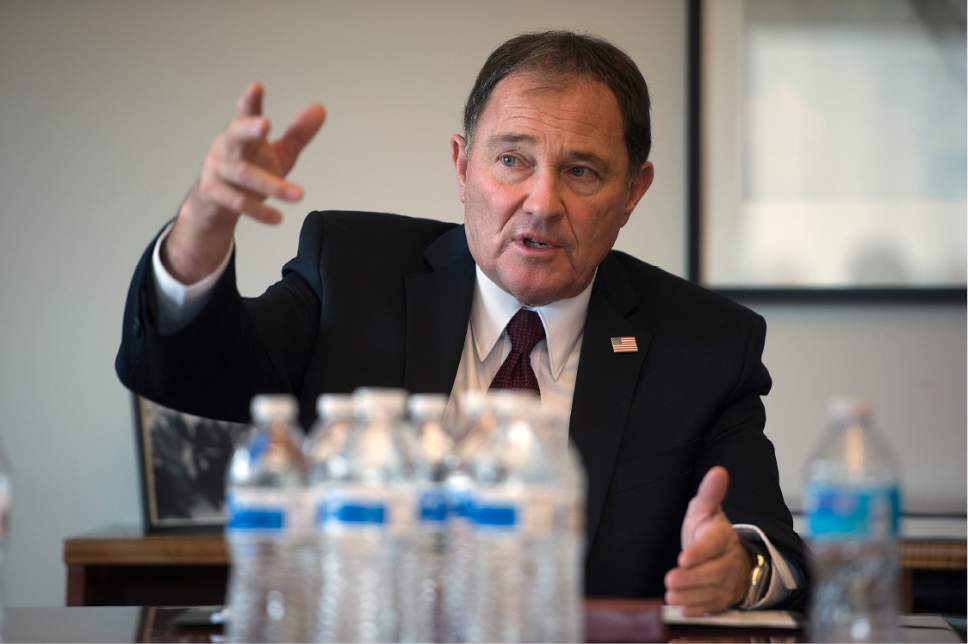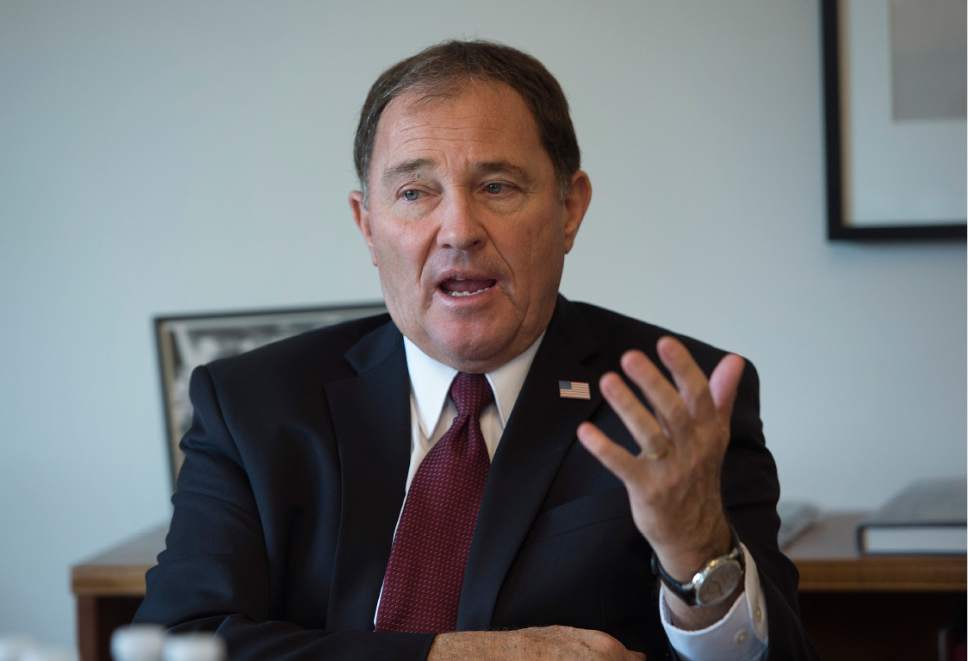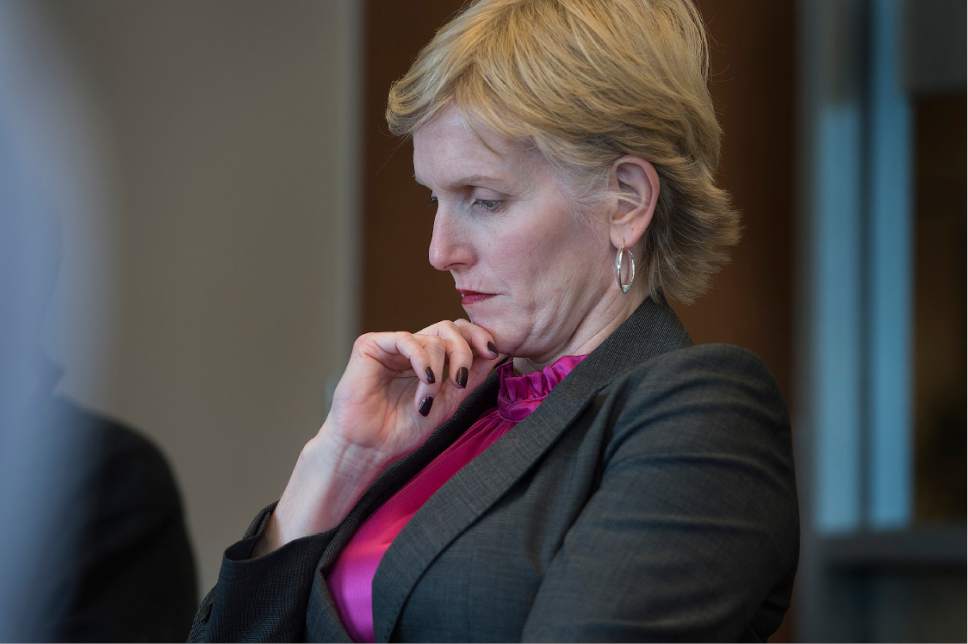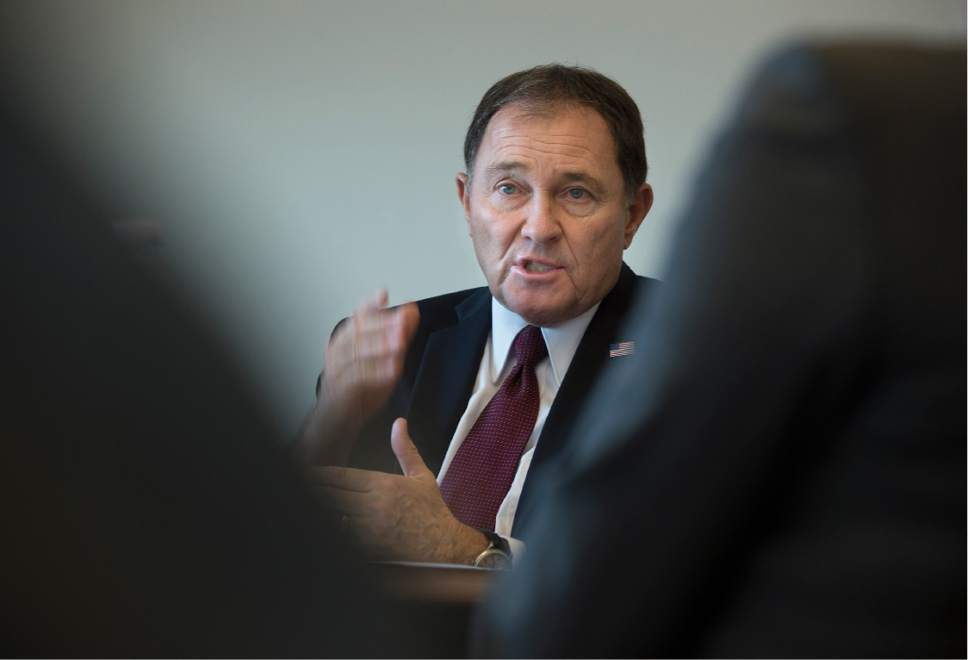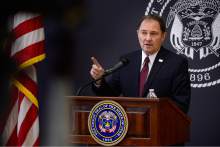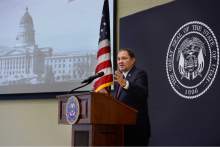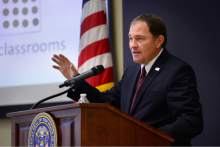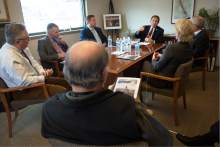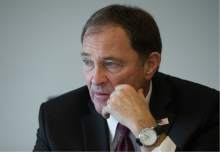This is an archived article that was published on sltrib.com in 2015, and information in the article may be outdated. It is provided only for personal research purposes and may not be reprinted.
Gov. Gary Herbert proposed a $422 million increase in spending on public and higher education next year, the focal point of his $14.8 billion budget he sent to lawmakers Wednesday.
"Everyone should know my No. 1 budget priority since I came into office is education," Herbert said. "It's not all about the money, but it is some about the money, so we're putting the bulk of this new money into education. Seventy percent of the new money is going into education."
The infusion would mean the state would end up spending $206 more for every student in a school system that has consistently been at the bottom of per-pupil spending nationally and bringing to $1.7 billion increases over the five years since the state emerged from the Great Recession.
"It's a good start," Herbert said. "It's not enough. My plan is to invest another billion over the next five years into public education."
The governor's annual budget blueprint is merely his set of recommendations to the Utah Legislature, which will put together the final state spending plan during the general session beginning next month. Lawmakers have frequently given little deference to the governor's proposals, although the plan does identify areas the Herbert administration considers a priority.
House Speaker Greg Hughes, R-Draper, called the governor's budget proposal a "critical exercise that goes on," but now legislators will get ready to begin their work.
"We have different roles. It's important to know where the executive branch is, what are their priorities," he said. "The session, as it's designed with all its committee hearings, with the independent scrutiny that each lawmaker provides, will most likely come up with something that's not like any of us would predict."
Hughes said he is confident that education will be well-funded, but he also pointed to work the state school board has done on digital learning as something lawmakers will likely want to address.
—
Technology • The school board called for $100 million to purchase learning devices for students and train teachers on incorporating technology into their classrooms.
David Crandall, chairman of the state school board, said that technology initiative is the largest difference between the board's priorities and the governor's budget. Where the governor prefers giving control over spending to local school districts, Crandall said the board sees a need for targeted funding to support a statewide technology plan.
"In theory, yes, it is something that could be done with [per-pupil dollars] but the chances for success are diminished a bit," Crandall said.
McKell Withers, superintendent of the Salt Lake City School District, said the governor's focus on per-pupil funding and early childhood investments is "spot on."
State funding for programs like preschool and full-day kindergarten has been relatively stagnant in recent years, he said, despite having a significant impact on student success.
"That is the most encouraging part of the budget," Withers said. "Most of the new kids coming into the school system are entering kindergartners."
Directing funding to per-pupil allocations, rather than specific programs, provides school district administrators with the greatest amount of budget flexibility, Withers said. But an increase of $206 per student, if it is adopted, would not translate into a significant shift in the services schools provide.
"It doesn't go very far," he said. "But it's positive and it's in the right direction."
Senate Budget Chairman Lyle Hillyard, R-Logan, said it used to be important for groups that want funding to be included in the governor's recommendation, but now that balance has shifted to the Legislature. Hillyard said he expects there will be consensus on a big increase for education.
"I suspect that public and higher education are going to be really big issues and support items for the Legislature," he said. "[Herbert's budget] is a good starting point and something to talk about."
The education infusion proposed was easily the biggest component of Herbert's new budget blueprint, but he also recommended addressing other hot spots in state government.
—
Refugees • Two employees would be hired by the State Bureau of Investigations to work with the U.S. Department of Homeland Security to verify background screenings for refugees relocating to Utah and to conduct outreach to ensure they are assimilating and do not pose a security risk.
Herbert was one of two Republican governors to say that his state would accept Syrian refugees, provided that the state Department of Public Safety could ensure they did not pose a terrorist threat.
"The rhetoric has gotten out of hand on both sides of the aisle on this issue. … It's disappointing to me. We understand religious persecution as well in Utah as anyplace," Herbert told The Tribune, referring to the historic persecution of Mormons in the United States.
He said the pair of new employees, which would cost the state $360,000 to hire, train and equip, would not be conducting surveillance on refugees, but would instead be helping them acclimate to the country, address their concerns, investigate allegations of hate crimes that might be committed against them and help ensure that they don't become "radicalized."
Herbert is requesting an additional $2.4 million for salary increases for state troopers and $450,000 to relieve administrators from some office work so they can spend more time patrolling the streets.
Other state employees would be in line for a 2.75 percent pay raise, under the governor's budget, with those at state colleges and universities receiving 2 percent more pay.
—
Taxes • There are no tax hikes in the budget, nor are there tax cuts. But Herbert is irritated at the amount of sales tax the state is losing to online sales — an estimated $180 million a year — and wants to see Congress act.
"I'm very frustrated. [Congress] keeps kicking the can down the road," He said. "If we could receive the $180 million we're losing, we could actually give a tax cut to the people of Utah."
Herbert wants to put $48 million toward relocating the Draper prison — an attempt to pay part of the cost in cash. The Legislature has already authorized $450 million in debt to pay the remainder of the cost. And the governor is proposing spending $2 million to provide treatment to state inmates in county jails and another $1.5 million to help supervise inmates after their release.
Additional money would also go toward air quality, with $6.2 million dedicated for monitoring and $500,000 to provide incentives for the replacement of polluting equipment.
"I think these are sound budget recommendations," the governor said. "They've been thoughtful, they've been methodical in our process of listening to the requests and demands and needs from the marketplace."
—
Earmarks • One area where the governor may end up clashing with lawmakers is over his proposal to reduce the amount of money earmarked for state road construction and maintenance. Herbert wants to remove $10 million of the road earmarks and invest it in intervention programs for at-risk children. The governor proposed a similar reduction to earmarks last year, and lawmakers refused to go along.
Herbert contends that the spate of earmarks added to state law in recent years means $653 million in state sales tax revenues are already spent as soon as they're collected for things like roads, water projects and liquor enforcement. That is a nearly sixfold increase since 2006.
"Unfortunately, over time, I think the Legislature has handcuffed themselves by taking away flexibility by earmarking money," Herbert said. "It may be a very good place to put it, but there ought to be a discussion about it."
There is no sweeping proposal to expand Medicaid, like the one the governor included in his budget last year, but was soundly rejected by legislators.
But there is a proposal to spend $10 million to help provide health care to low-income Utahns who make too much money to qualify for Medicaid, but too little to access federal insurance subsidies.
An estimated 62,000 Utahns fall into that coverage gap, and the majority of them work.
The Legislature is expecting the state will need at least $40 million more next year to handle growth in the existing Medicaid program, but the governor budgeted $20 million. His budget director, Kristen Cox, said if more is needed, the gap can be filled later.
Benjamin Wood contributed to this report
Twitter: @RobertGehrke



